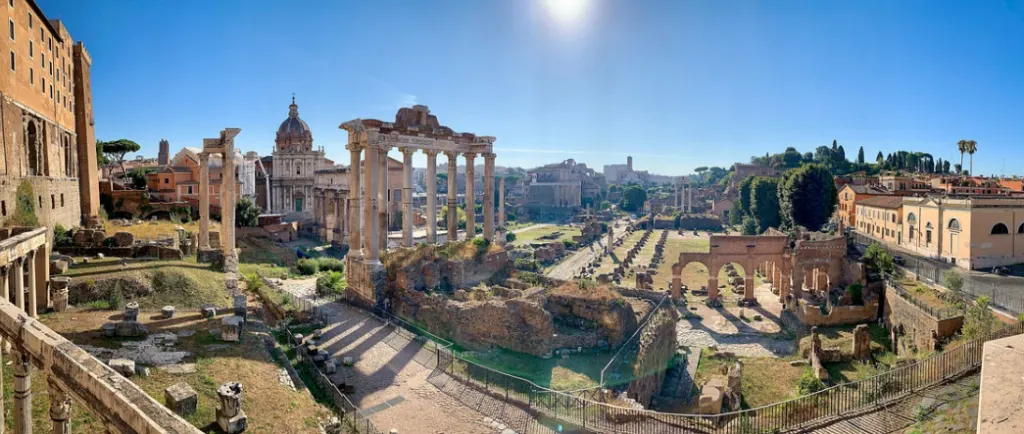It was a marketplace, central activity hub, and one of the most important squares in Ancient Rome for multiple centuries.
In this post, you’ll discover the ultimate list of facts about the Roman Forum, an incredible place full of history in Italy’s capital.
1. What is the Roman Forum?
The Roman Forum, one of the most famous sites in Rome, was the heart of Ancient Rome. If we make a comparison with modern times, it was what Times Square is for New York and what Trafalgar Square is for London.
Times were different though, a lot different. On the Roman Forum, which was a large public space in the center of Ancient Rome, there were triumphal processions, public speeches, trials, executions, gladiator fights, and most importantly, a lot of commercial activity.
Right now, the Roman Forum is a ruin full of archaeological fragments dating back thousands of years, back to the glory that the Roman Empire once was.

2. The most important buildings were located here
Apart from being an open square for public services and a marketplace, the Roman Forum also had the most important buildings of Ancient Rome built alongside it.
This includes government buildings, temples, statues, shrines, etc. The oldest buildings in Rome were built here, including the Regia (8th century B.C.), and the Temple of Vesta (7th century B.C.), as well as the Palace of the Vestal Virgins for Ancient Rome’s priestesses.

3. Where is the Roman Forum located?
It’s located in a small valley between the Palatine Hill, which had the Circus Maximus at its foot, and the Capitoline Hill, another of the 7 hills in the center of Rome on which the city was built on.
The two basilicas, the Basilica Julia and the Basilica Aemilia defined the long sides of the Roman Forum, and it extended as far as the Arch of Titus, a famous arch built to commemorate the sacking of Jerusalem under the command of Titus and which provided funding to build the Colosseum. The area with the famous arena and the Arch of Constantine wasn’t included.
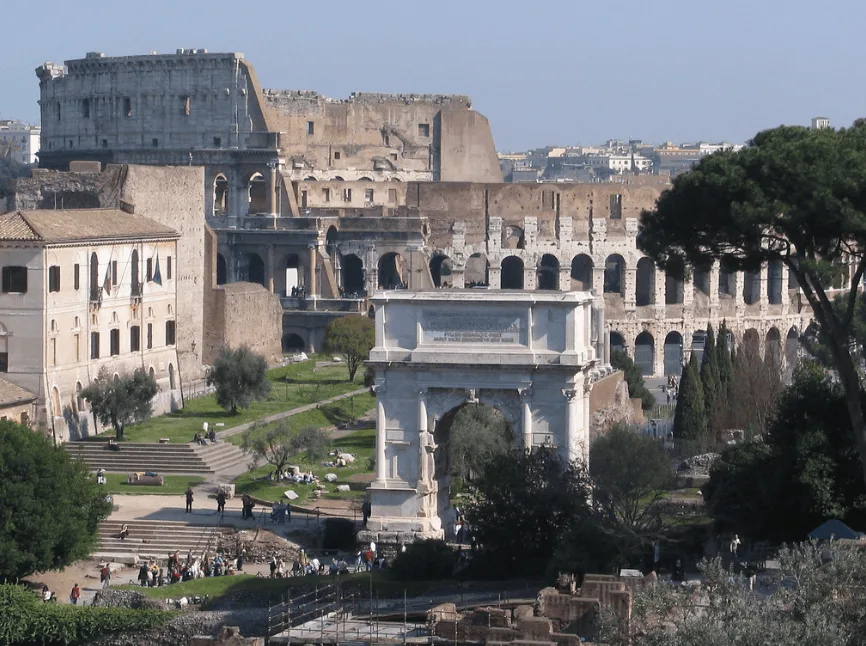
4. It wasn’t exactly neatly structured
The earliest buildings of the Roman Forum were built in the 8th century B.C. The Forum didn’t get its final form until the Imperial period though, which started in the first century B.C.
This means that the public square and its surrounding buildings were constructed over many centuries, without any type of order.
Among many others, Julius Caesar and Augustus tried to integrate some order in the piecemeal public square with only limited success.

5. How did the Roman Forum look like?
By the time the Roman Empire was formed in the first century B.C., the Roman Forum was nearly surrounded by structures.
This means that the open square was reduced to a rectangle-shaped public space with narrow passages and multiple arches to actually enter the square.
The ruin with scattered ruins looked liked this according to a 3D simulation of the structures we know were proudly standing on the Roman Forum in the Late Empire.
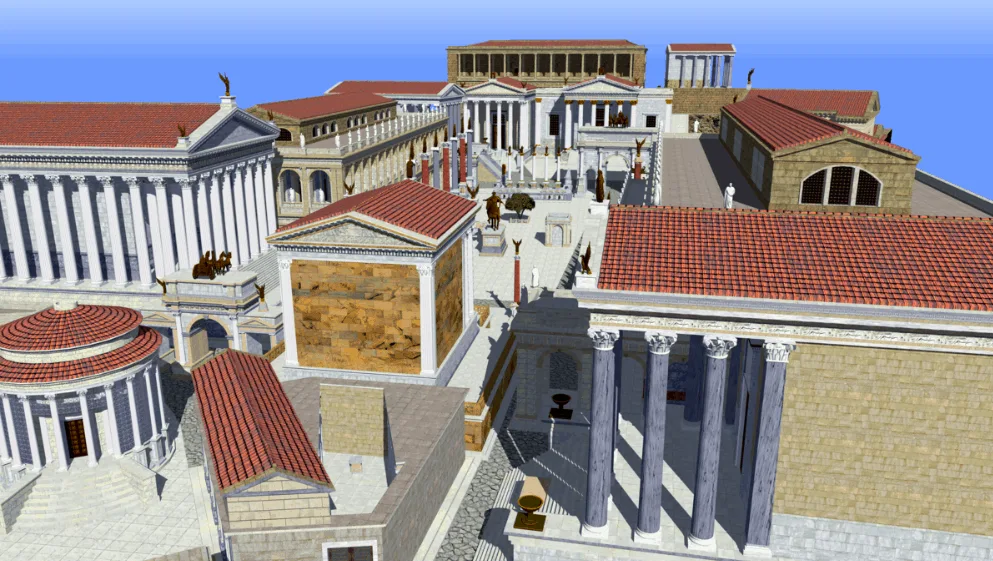
6. The last major building was constructed in 312 A.D.
Even though the political and economic activity gradually moved to other locations in Ancient Rome, the Forum remained one of the most important locations in the city.
The finalization of Trajan’s Forum, commissioned by Emperor Trajan, marked a shift in importance. This happened in the year 110 A.D. Regardless, the Forum was still being expanded over the coming centuries.
One of the final Roman additions was the Basilica of Maxentius, which was constructed under the reign of Constantine the Great in the year 310 A.D.
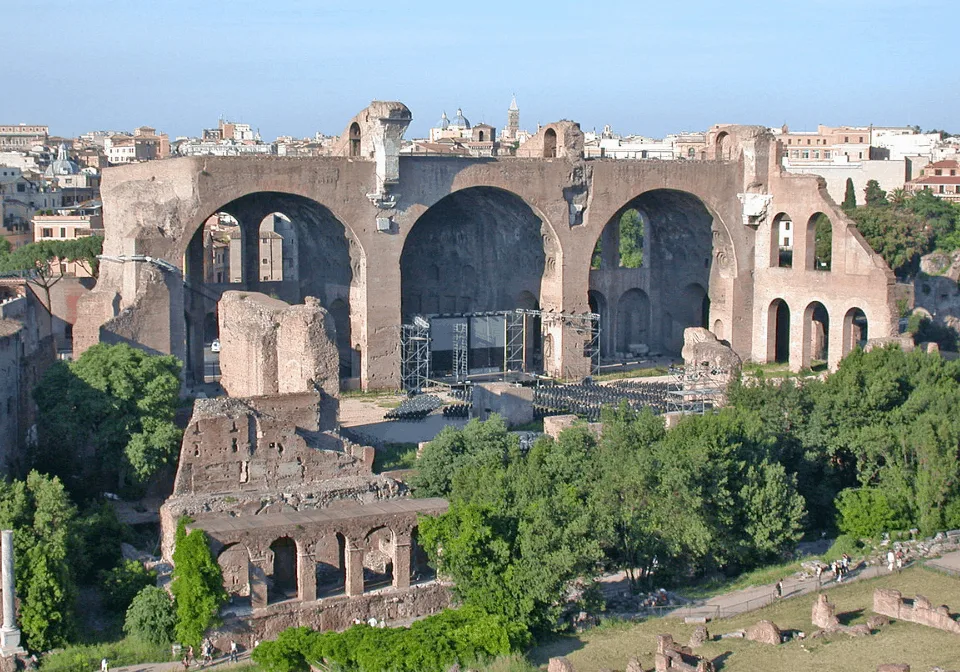
7. Attempts to preserve the Roman Forum were in vain
After the fall of the Western Roman Empire in the year 476 A.D., the population of Rome drastically reduced. It’s estimated that only 1/3 of the estimated 750,000 Romans still lived in the Eternal City.
Even though some structures were still being built, and many of the existing buildings were transformed into Catholic churches, similar to for example the Pantheon and the Castel Sant’Angelo, most of the buildings started falling apart over the coming centuries.
By the 8th century, most of the temples and monuments in the Roman Forum were falling apart, and many of them were dismantled to build castles and other structures in the area.

8. Many materials were used for the biggest church in the world
When St. Peter’s Basilica was being built in the 16th century, Pope Paul III used a lot of the stones from the Roman Forum’s ancient monuments to construct it.
All the houses and medieval structures that were built on the site were removed to hold a triumph in honor of Holy Roman Emperor Charles V for his conquest of Tunis in 1535.
Because of this, the ancient monuments were uncovered and later used for the construction of what would become the largest church in the world in Vatican City.

9. The Roman Forum became a “cow field”
Because of the neglected state of the area in the centuries that followed the construction of the St. Peter’s Basilica, the area was used to let livestock graze.
Because of this, the most important square of Ancient Rome was being referred to as the “Campo Vaccino”, or “cow field.“
A painting with the same name, on display in the Louvre, depicts the situation of the forum in the year 1636.
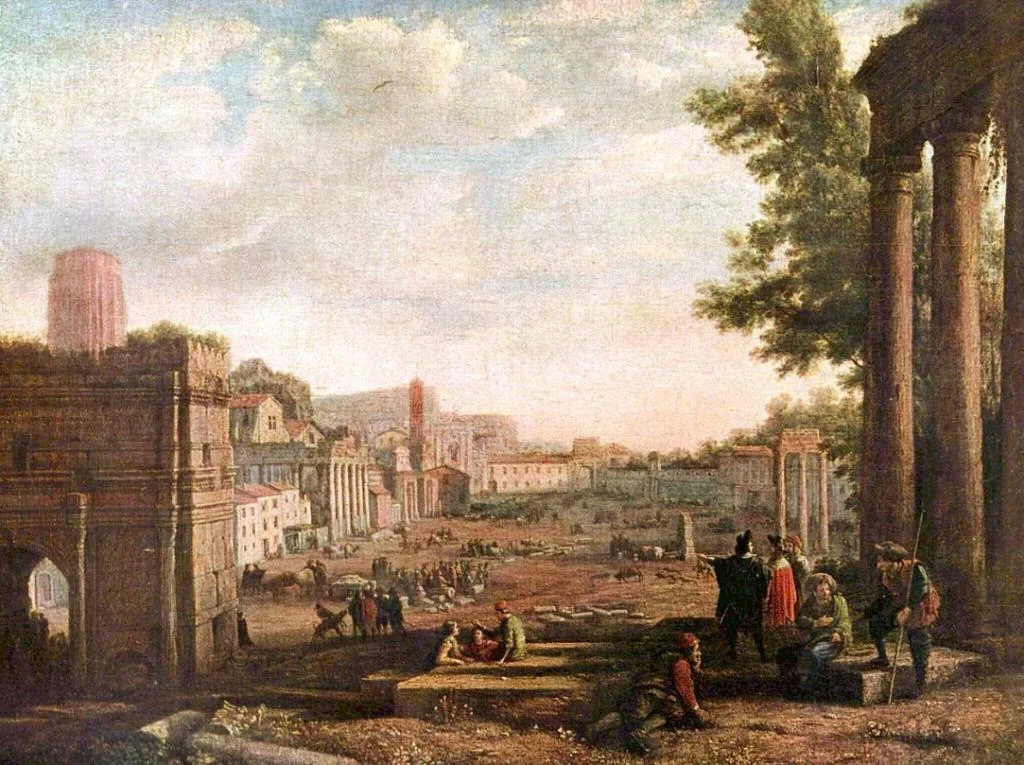
10. The site remains an important archaeological site
It wasn’t until the early 19th century that the first archaeologists showed interest in the site of the Roman Forum.
The first to excavate the area of the Arch of Septimius Severus was Carlo Fea in 1803. He was soon joined by many others until the Italian Government officially got involved at the end of the same century in 1898 and is still ongoing today!

Quick facts about the Roman Forum
11. People living in Ancient Rome referred to the Roman Forum, or the “Forum Romanum” in Latin, as the “Forum Magnum” or simply the “Forum.”
12. The area the Roman Forum was built in used to be a marshy lake until it was drained by the construction of the “Cloaca Maxima,” Ancient Rome’s famous sewer.
13. By the imperial period, the Roman Forum measured between 50 to 130 meters (164 – 426 ft – low estimate) or 75 to 200 meters (246 – 656 ft – high estimate).
14. The first two temples were built on the forum in the 5th century B.C. These were the Temple of Saturn (407 B.C.) and the Temple of Castor and Pollux (484 B.C.). Part of both temples’ ruins still stands in the forum.

15. The first Basilicas were built in the 2nd century B.C. by Cato the Elder, who was also the first to start to monumentalize the Forum.
16. The Romans had their very own version of a records hall, referred to as the “Tabularium,” which was built in 78 B.C. and stood about 15 meters (49 ft) above the Forum. Part of it has survived.
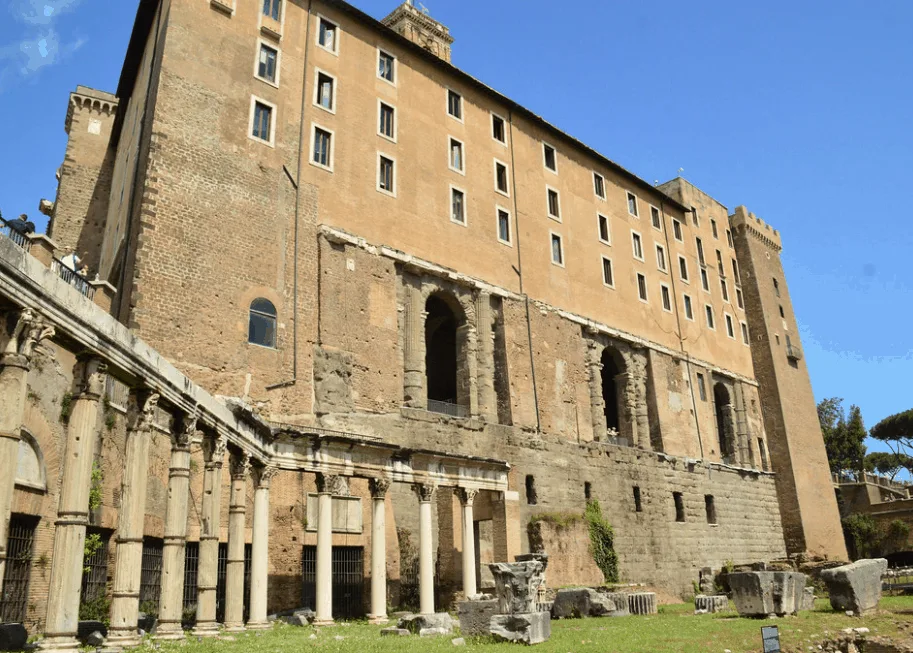
17. One of the most famous speeches ever delivered was given in the Roman Forum. Mark Anthony’s “funeral oration of Caesar” was later immortalized by Shakespeare.
18. Roman Emperor Augustus built two important structures, the Temple of Julius Caesar and his very own Arch of Augustus, both in the year 29 B.C.
19. Augustus’ Arch has been destroyed over the centuries. The Arch still standing is the Arch of Septimius Severus, which was constructed in 203 A.D. to commemorate the Parthian victories of the Roman Empire.
20. The last monumental addition was the Column of Phocas, a Roman monumental column in honor of the Eastern Roman Emperor Phocas. This column was erected on August 1, 608.

21. Many medieval structures were being built on the grounds of the Roman Forum, leading the ground levels to rise and the ancient monuments to be covered below the debris.
22. In 2009, a team of archaeologists working inside the Roman Forum has made a stunning discovery that questions the real age of the city of Rome.
A wall made of Tufa limestone reveals that the city might have been founded between the end of the 9th and beginning of the 8th century B.C., which is much earlier than the legend which claims Rome was founded in the year 753 B.C.
23. The Roman Forum is visited by nearly 5 million tourists every single year!
